Thermal shock quickly induces insensibility; electric shock likely to be a good alternative
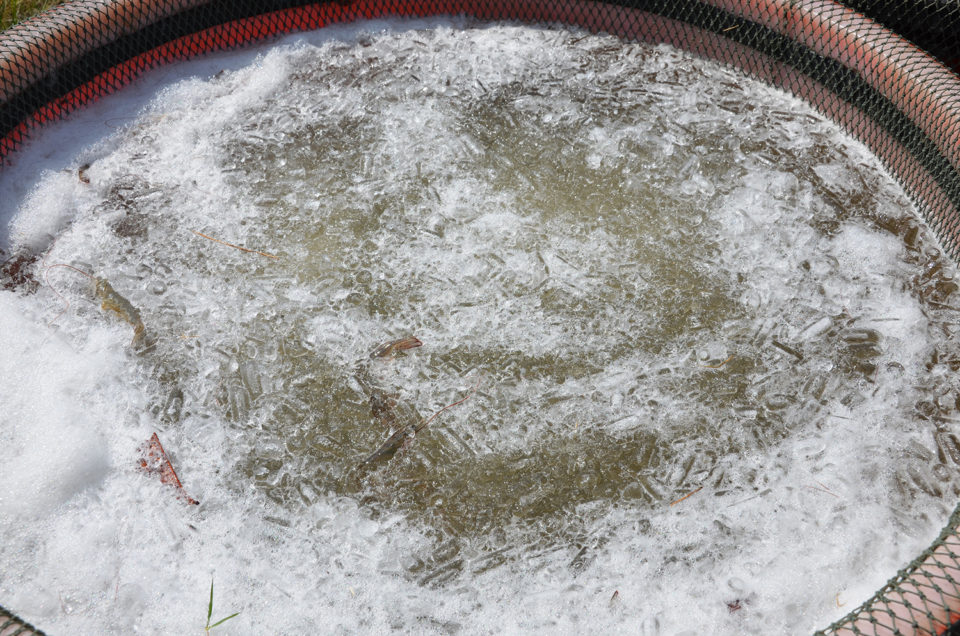
In recent years, scientists, policy makers and non-governmental organizations (NGOs) have increasingly considered the possibility that crustaceans may have the ability to experience pain. A well-documented aspect that underpins this theory is the ability of crustaceans to perceive noxious stimuli and modify their behavior accordingly, both in the short and the long term.
Although we still do not have unanimous and definitive answers to this theory, the body of evidence in its favor is increasing and some governments are responding by passing new regulations to protect the welfare of crustaceans at the time of harvesting.
In shrimp farming – as in the farming of any other fish and crustacean species – the steps between harvest and slaughter may cause stress and pain. Therefore, the animals should be stunned as soon and as quickly as possible directly after harvest to protect their welfare.
Shrimp stunning and slaughter are manual procedures in most cases. Shrimp are typically stunned by thermal shock, which involves the immersion of the animals in salt water with temperature below 4 degrees-C (iced water or ice slurry). This maintains product safety and quality and minimizes the exposure to stress and noxious stimuli by reducing their sensory perception. This practice is endorsed by the Royal Society for the Prevention of Cruelty to Animals (RSPCA) as a humane method for stunning tropical shrimp.
The recommended minimum immersion time of 20 minutes ensures that all shrimp movements stop. This, the RSPCA considers, indicates the animal’s loss of ability to feel pain. However, evidence of the effects of thermal shock on the central nervous system (CNS) of shrimp is scarce and it is not clear how long it actually takes for the animal to stop perceiving external stimuli after immersion.
Study setup
A team at the University of Kentucky, in collaboration with the Seafresh Group, studied the effects of two different stunning methods on the welfare of three crustacean species, including the tropical whiteleg shrimp (Penaeus vannamei) (http://www.mdpi.com/2076-2615/8/9/158).
Shrimp were stunned by using either thermal shock by means of an ice slurry or electric shock. Both may be considered to be noxious stimuli whose effects can be perceived as stressful or painful. The effects of exposure to these stimuli on the sensory neural circuits were measured. In shrimp, the heart is neurogenic, meaning that the presence and rate of beating is indicative of the neuronal function. Thus, the changes in heart rate through electrocardiogram (ECG) were measured as an indicator of the impact of the two stunning techniques on the CNS.
Results
The ECG of 24-gram shrimps showed that before exposure to cold, pinching of the tail resulted in an increased heartbeat. Upon immersion in ice slurry, the heartbeat started decreasing immediately. After 5 to 30 seconds of immersion, pinching did not affect the heartbeat anymore and ultimately the heartbeat stopped. After a few minutes of immersion in an ice slurry, the heart rate of the shrimps placed back into warm water returned to normal status (Fig. 1.) Furthermore, it was also demonstrated that the violent tail flicking that occurs typically after 45 seconds to 1 minute of immersion, is likely to be an involuntary movement since the same response is seen in the absence of a heartbeat and even when the central ganglia are removed from the animal.
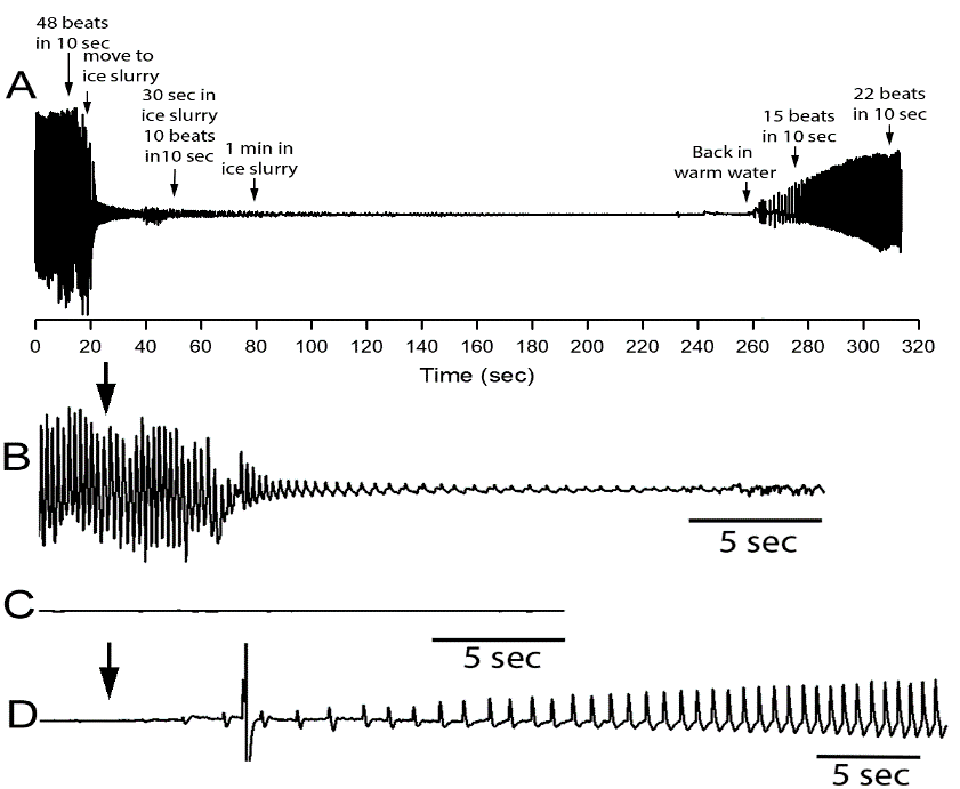
The study also assessed the potential of electric stunning as a method for inducing insensibility. Electric stunning was performed using a simple setup which used an AC source. After a 10-second electric shock, the heart rate decreased and shrimp were unresponsive to touch. Shrimp recovered from the shock after a few minutes but the heart rate became irregular. Another trial was carried out separately (unpublished report by Dr. Jeff Lines, 2016) using a more advanced electric stunning prototype and by assessing animal behavior. Shrimp electroshocked for 5 seconds showed a lack of response to touch afterwards.
The results of these experiments suggest that thermal shock of shrimp P. vannameiinduces insensibility within a few seconds and is an effective method for maintaining acceptable conditions of animal welfare prior to slaughter. Our experiments confirmed that electric shock has the potential to be an effective method for stunning shrimp. Further research is needed to optimize the parameters for electric stunning, which may vary with the equipment model, the size of the animals and their molting stage, and to understand its effects on the CNS.
It is probable that the length of time of exposure to cold needed to render the animals insensible needs to be adapted to the size of the shrimp. Larger shrimp may need longer exposure time. The length of exposure should also differ depending on whether the aim of the stunning process is to cause temporary insensibility or death. A shorter exposure time to cold is likely to result in a reversible stun, which needs to be followed by a separate slaughter step (such as cooking or de-heading). Longer exposure time to cold can kill them in a combined stun-kill step.
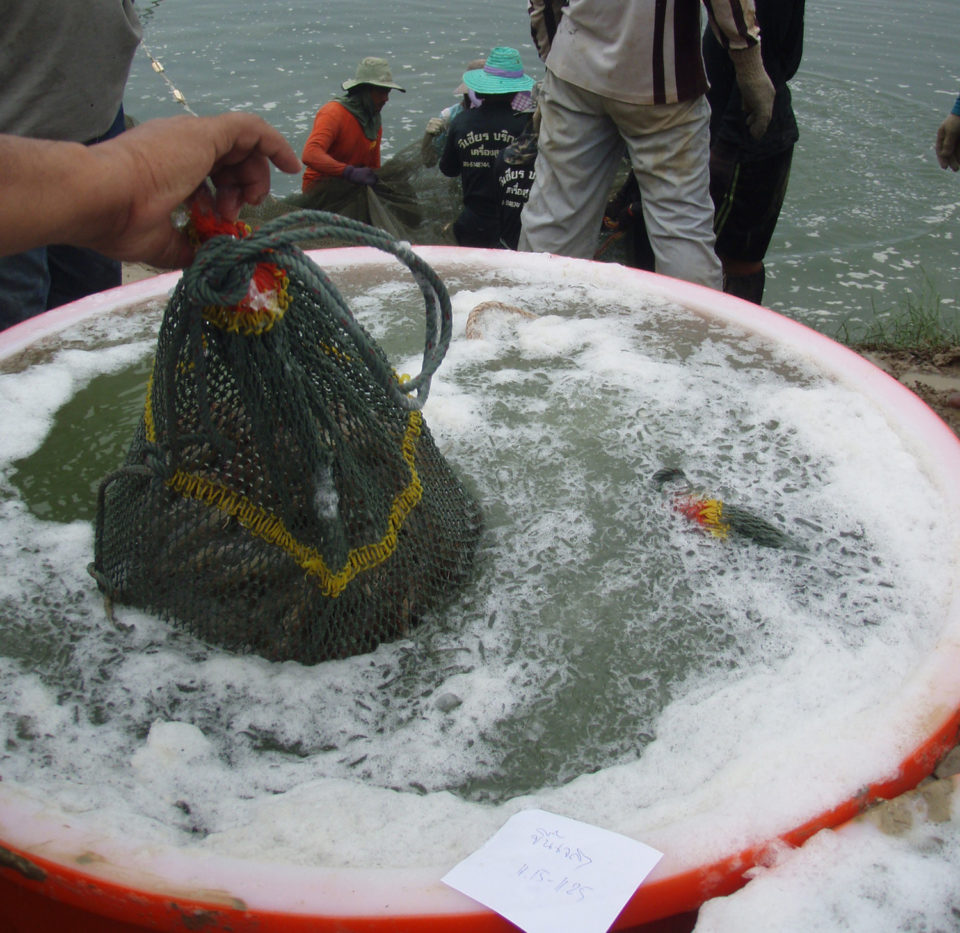
Perspectives
Thermal shock and electric shock would present different advantages depending on how harvest and slaughter processes are conducted. We speculate that producers using a stunning step associated with manual handling of shrimp might benefit from the use of an electric stunner to speed up the process between harvest and slaughter, especially during the harvest of large shrimp.
The use of an electric stunner in replacement of thermal shock may improve the consistency and reliability of the stunning process and decrease the amount of time and energy needed to produce and carry ice or ice slurry to the ponds. Nonetheless, small farms and farms that use mechanical harvest methods and transfer shrimps into an ice slurry where shrimps are kept until death, are likely to still find stunning by thermal shock a more cost-effective method for ensuring animal welfare.
Additionally, this study highlighted the importance of considering physiological indicators when assessing animal welfare during stunning. In the case of tropical shrimps, the interpretation of behavioral indicators alone was found to be misleading in the assessment of perception of noxious stimuli.
The development of a framework that links specific behaviors to physiological measures could become a useful tool to be used by policy makers and by trained operators in commercial settings to verify the correct execution of stunning procedures.
Now that you've reached the end of the article ...
… please consider supporting GSA’s mission to advance responsible seafood practices through education, advocacy and third-party assurances. The Advocate aims to document the evolution of responsible seafood practices and share the expansive knowledge of our vast network of contributors.
By becoming a Global Seafood Alliance member, you’re ensuring that all of the pre-competitive work we do through member benefits, resources and events can continue. Individual membership costs just $50 a year.
Not a GSA member? Join us.
Authors
-
-
Dr. Dominique Gautier
Seafresh Group
Redditch, Worcestershire
B98 0RE, UK
-
Dr. Robin Cooper
Department of Biology
University of Kentucky
Lexington, KY 40506-0225 USA
Tagged With
Related Posts
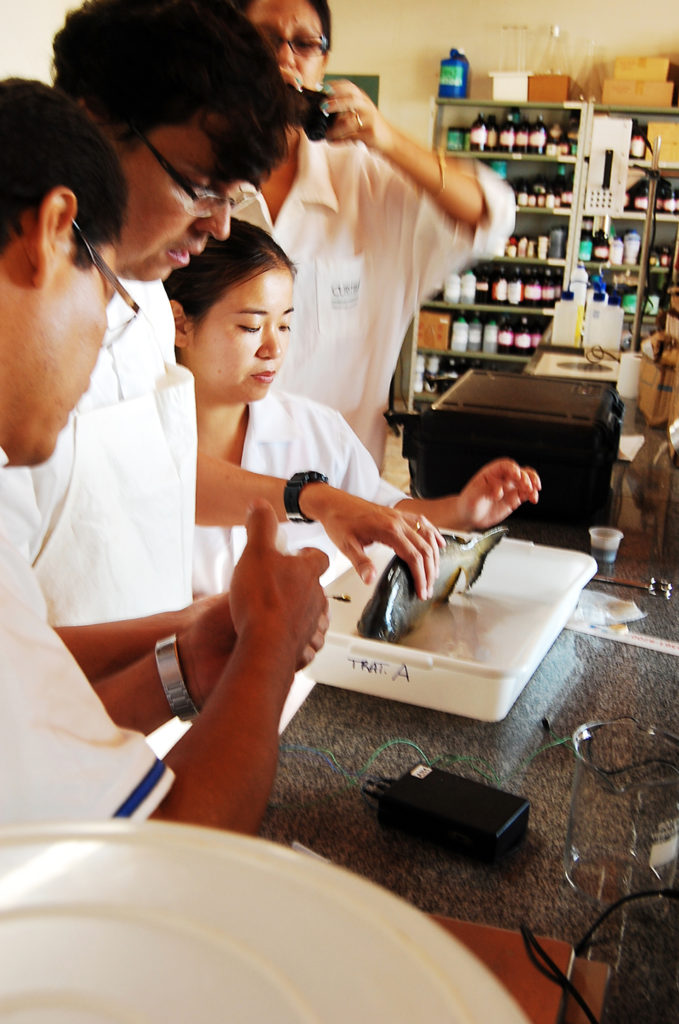
Health & Welfare
Brazil survey: Animal welfare perspectives vary between producers, researchers
Survey participants also indicated that, in general, Brazil’s fish-farming industry is addressing elements of animal welfare to some degree, but can improve.
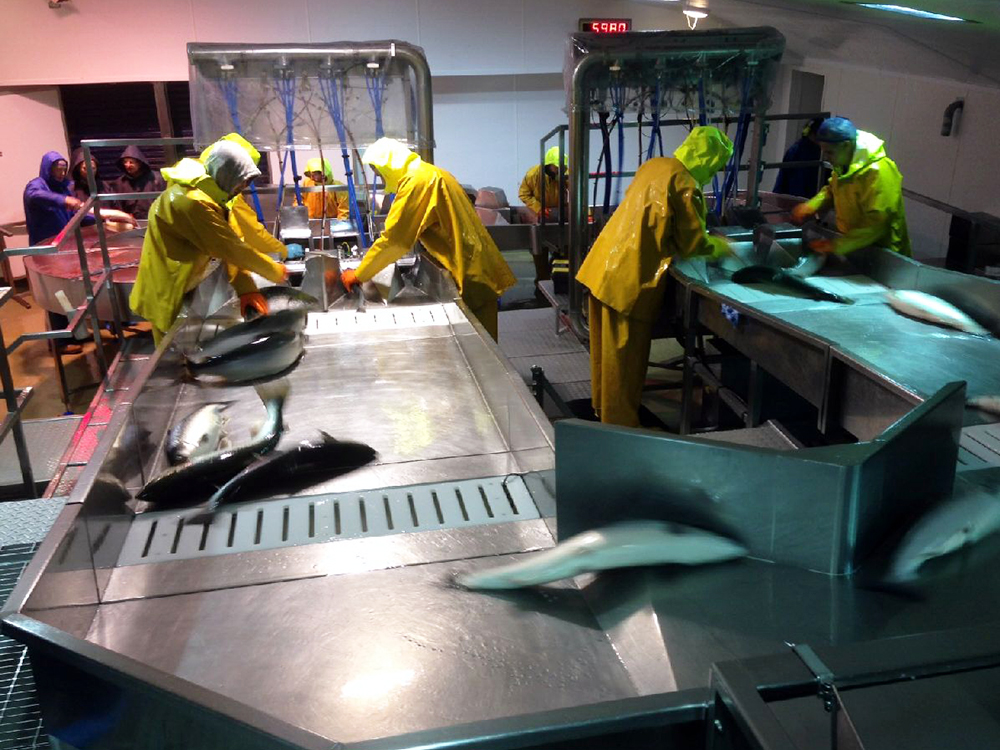
Health & Welfare
Fish producers benefit from humane slaughter techniques
EU legislation requires farmed fish be spared unnecessary pain, distress or suffering at slaughter, and efficient manual and automated systems have been developed to help achieve this goal. What’s more, longer shelf life and improved flesh quality have been reported.
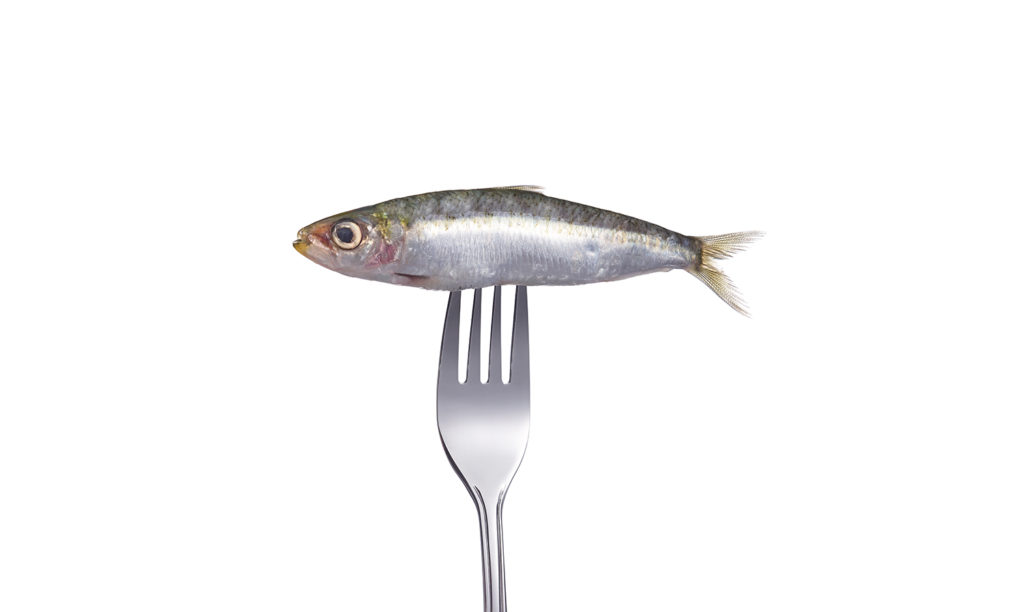
Health & Welfare
Study ties animal welfare practices to consumer purchasing
There’s an opportunity to expand the U.S. market for farmed seafood if the aquaculture industry were to more widely adopt humane production practices, according to a study by Changing Tastes and Datassential.
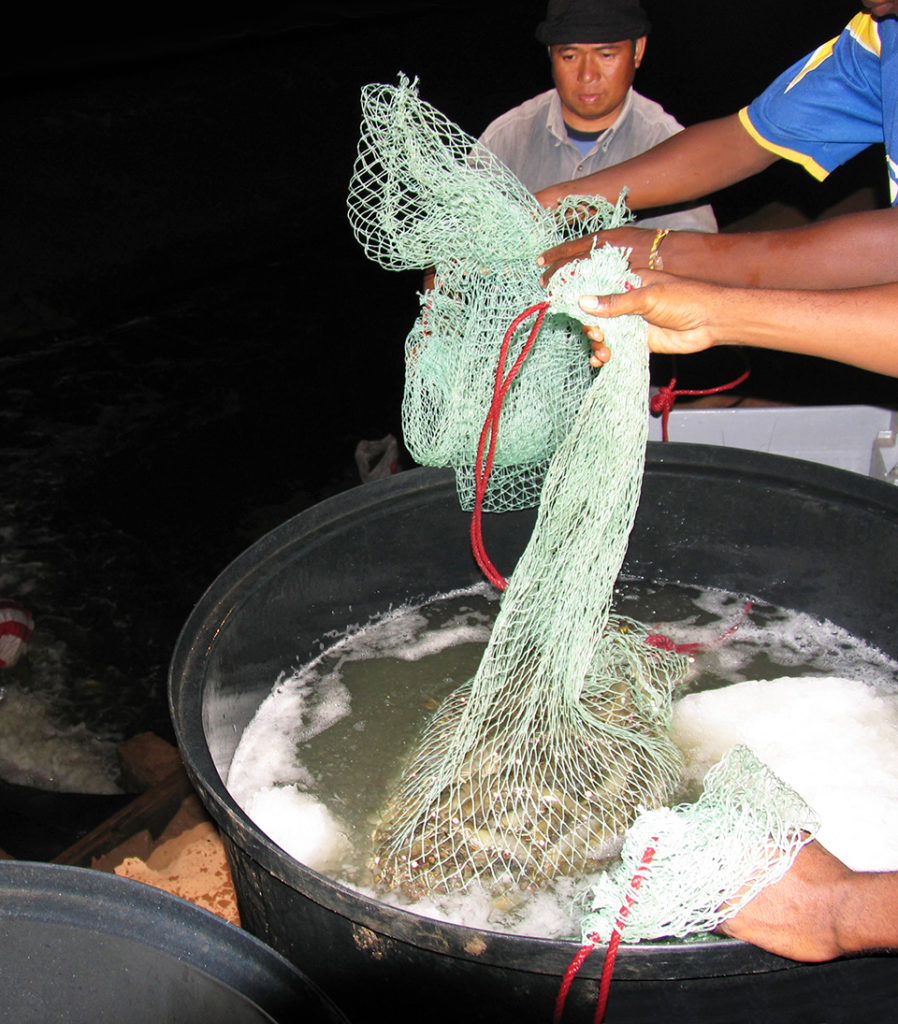
Health & Welfare
Killing methods, post-slaughter quality, part 1
The methods used to kill fish depend on many factors, including fish size and species, aquaculture production system, fish quantity, market preferences and effects on product quality. Also, some methods may not be approved in some countries, as with the use of anesthetics and regulations concerning the ethical treatment of animals.



